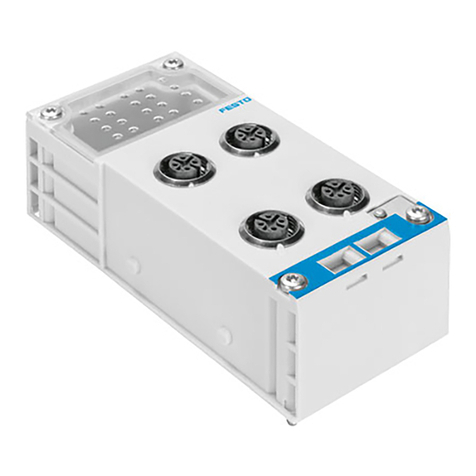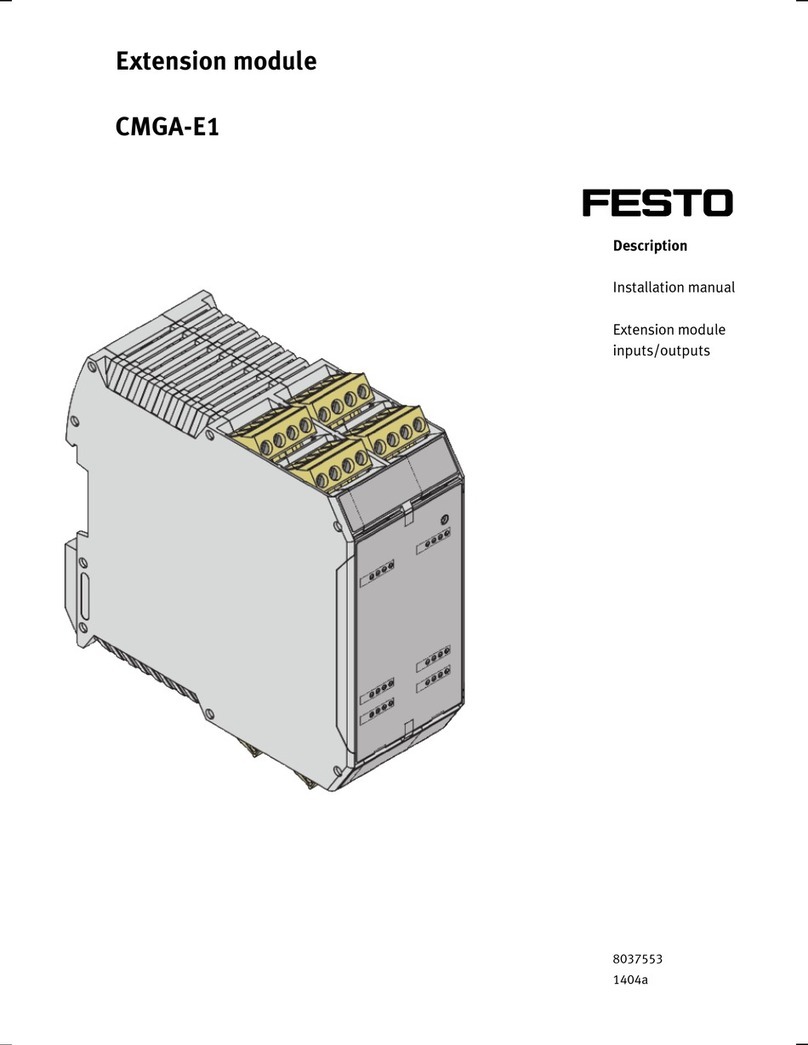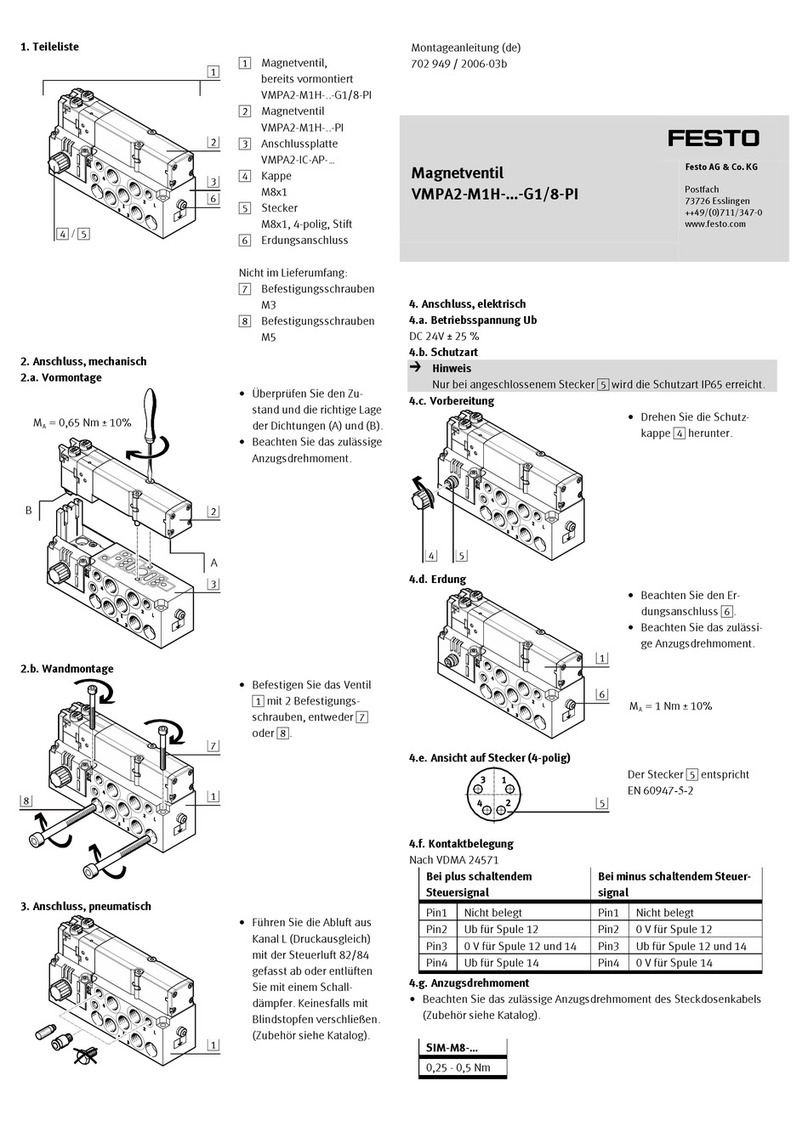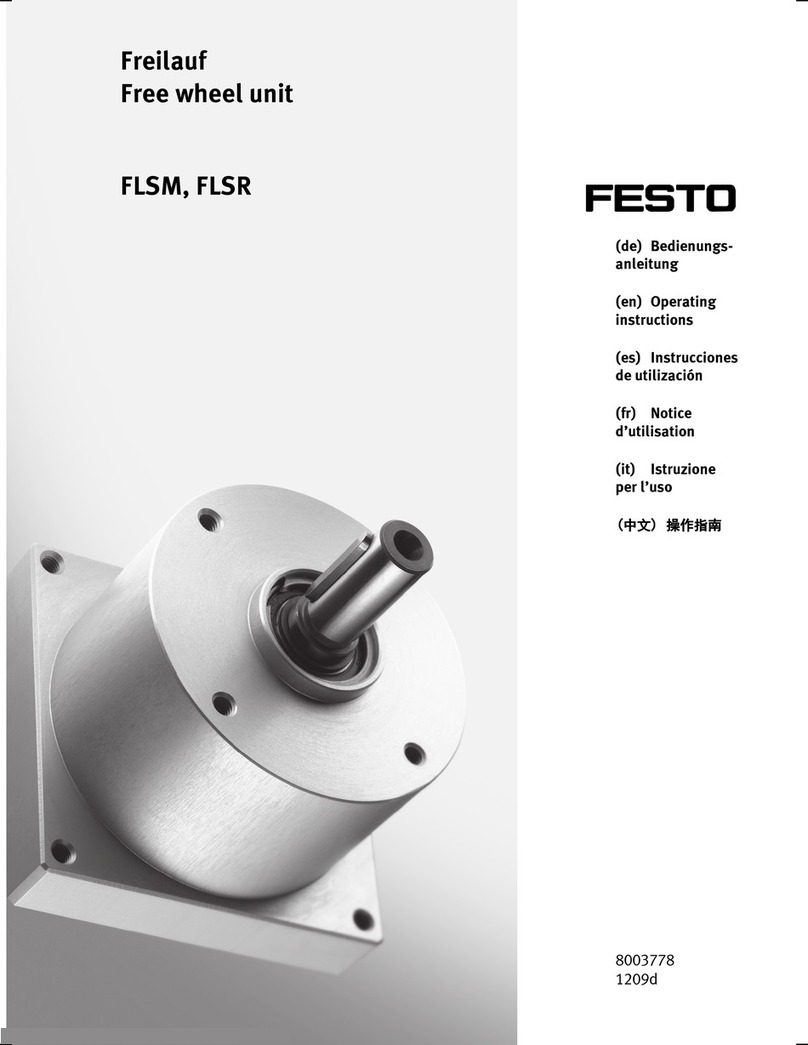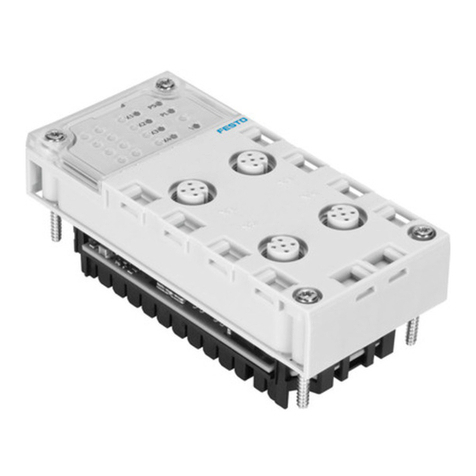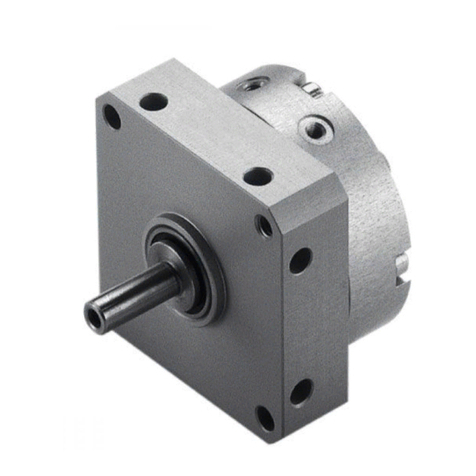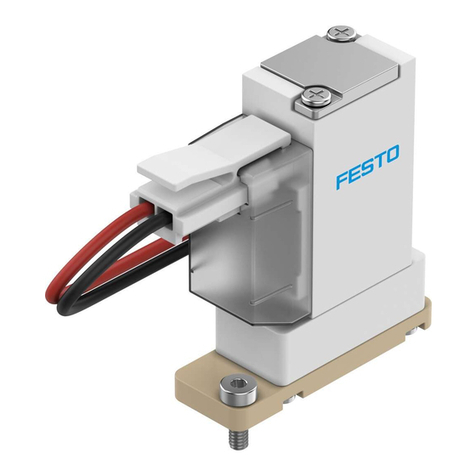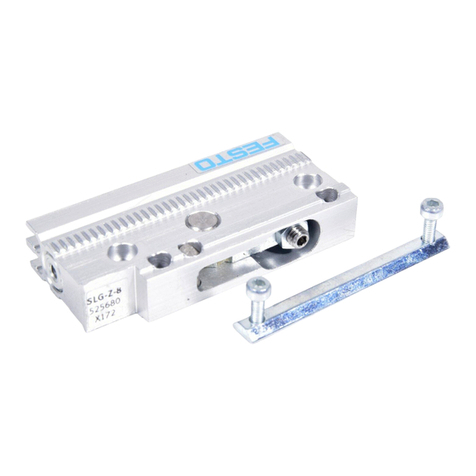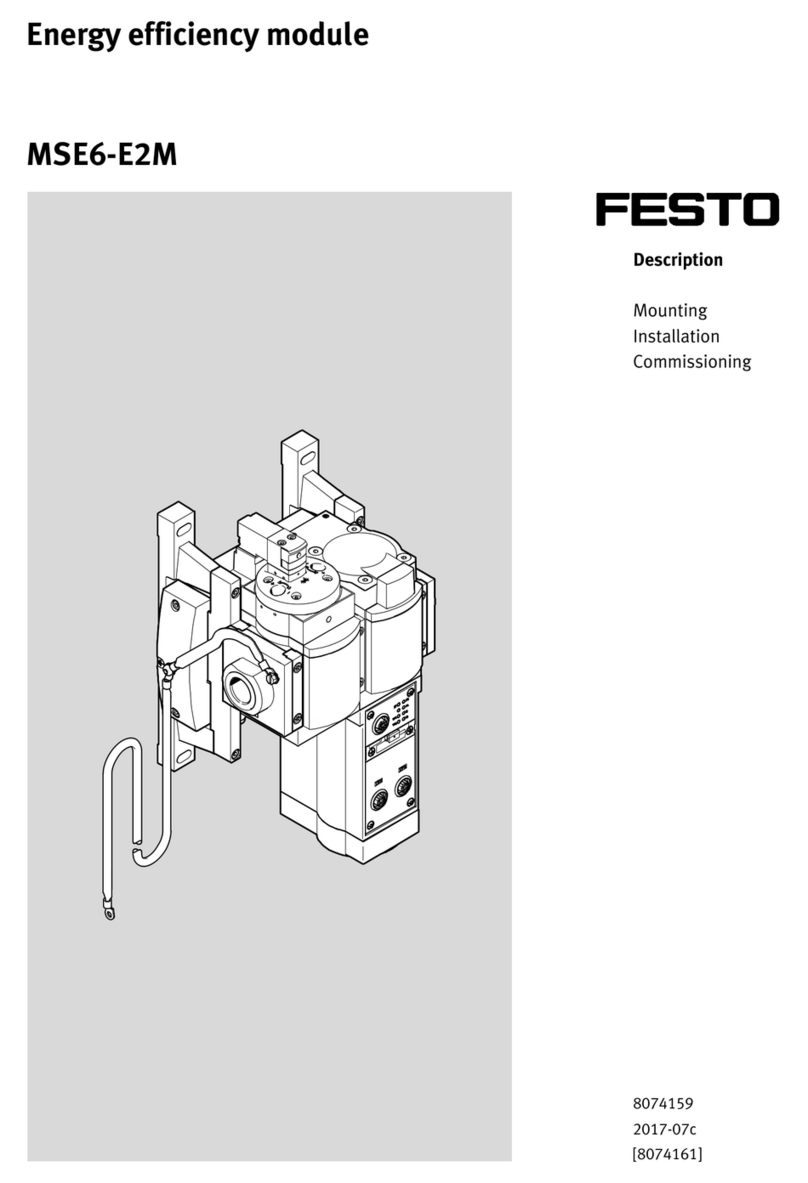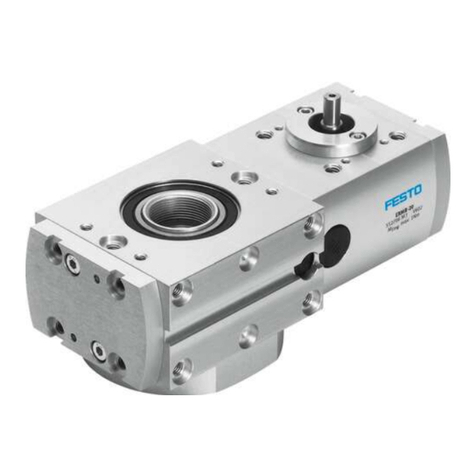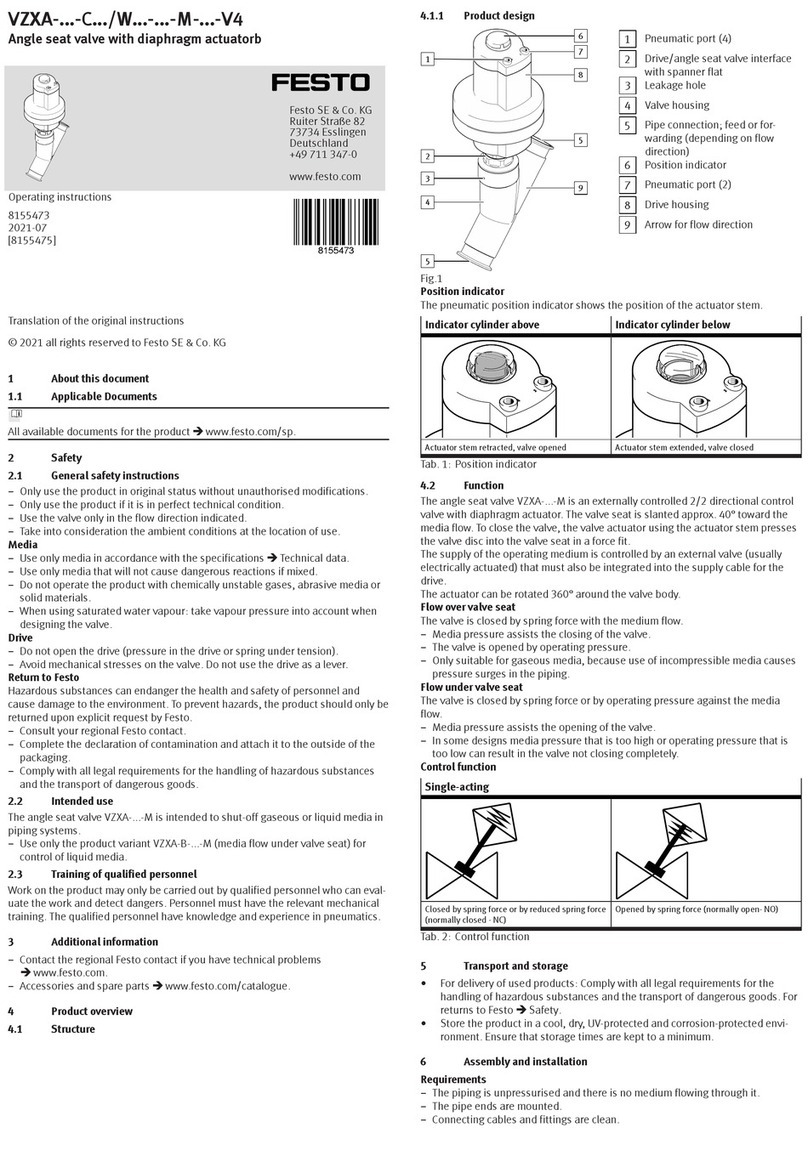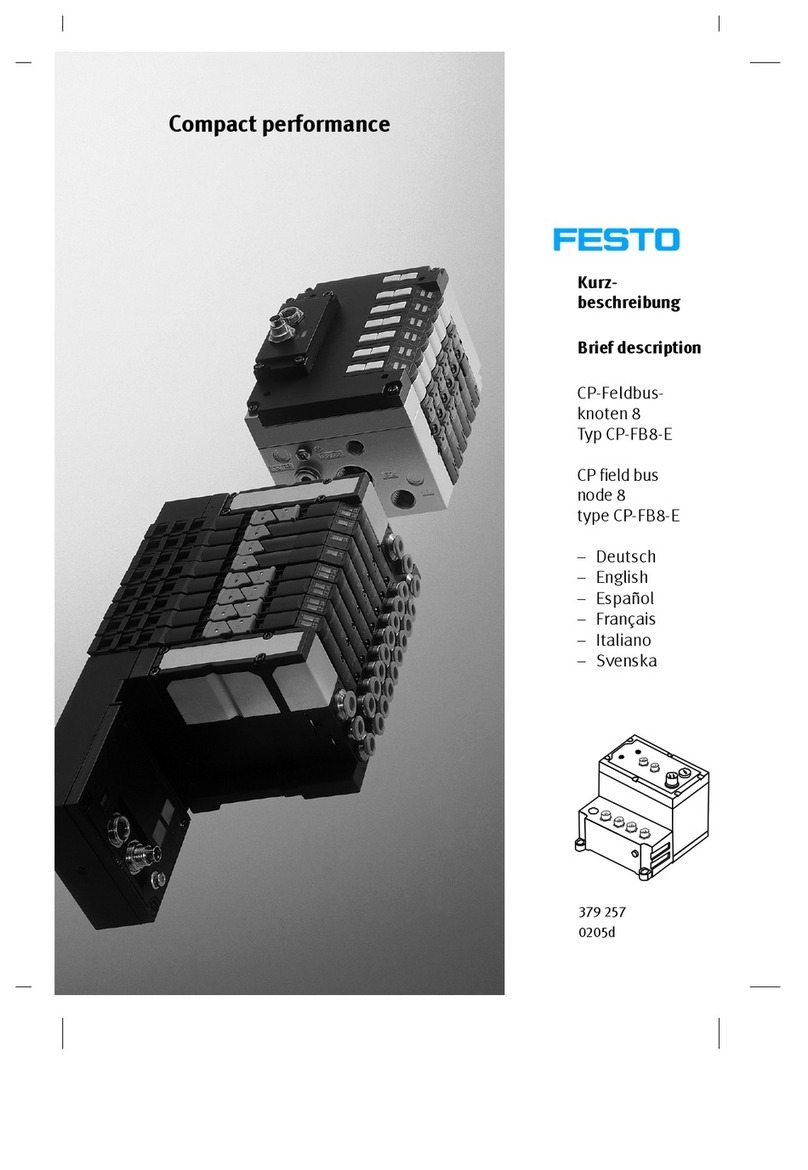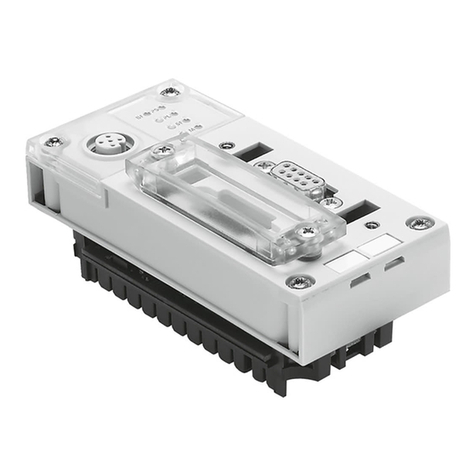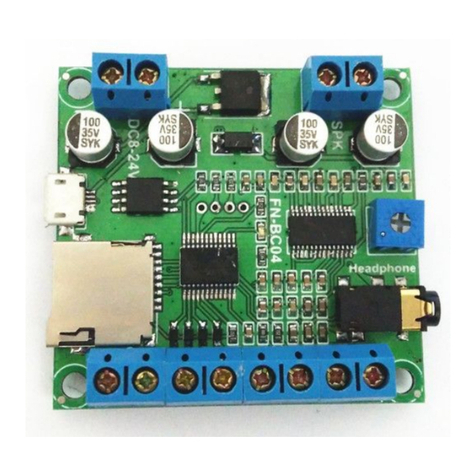Bus module
CPX-E-EP
Festo AG & Co. KG
Ruiter Straße 82
73734 Esslingen
Germany
+49 711 347-0
www.festo.com
Instructions for use
Original instructions
8071163
2017-07
[8071165]
Bus module CPX-E-EP (EtherNet/IP, Modbus TCP) English...................
1 About this document
This document describes the use of the above-mentioned product.
Certain aspects of use are described in other documents and must be observed
è1.1 Further applicable documents.
EtherNet/IP®and Modbus®are registered trademarks of the respective trade
mark holder in certain countries.
1.1 Further applicable documents
Document Contents
Description of system CPX-E (CPX-E-SYS) Detailed description of the system CPX-E
Instructions for use of system CPX-E
(CPX-E-SYS)
Instructions and important notes on mounting,
electrical installation and maintenance tasks
for a system CPX-E
Description of bus module CPX-E-EP (CPX-E-EP) Detailed description of product function and
parameterisation options
Device description file (EDS) Definition of the modules of a CPX-E system for
integration into the higher-order controller
Documentation for the components in a system
CPX-E and the connected peripherals
Information on use of the components
Documentation for the higher-order controller
and the additional participants in the network
Information on commissioning and
parameterisation of the components
Fig. 1
For all available product documentation èwww.festo.com/pk
1.2 Product version
This document refers to the following product versions:
Product Version
CPX-E-EP Bus module CPX-E-EP, revision 1 onward
Fig. 2
The product version can be identified from the product label or with the help of
appropriate software from Festo.
Appropriate software for identifying the product version can be found in
the Festo Support Portal èwww.festo.com/sp. Information on using the
software can be found in the integrated Help function.
There may be an updated version of this document for these or later
product versions.
Check whether a corresponding version of this document is available
inthe Festo Support Portal èwww.festo.com/sp.
1.3 Product labelling
The product label is located on the left-hand side of the module. Scanning the
printed Data Matrix Code with an appropriate device opens the Festo Support
Portal with the relevant documents for the product. Alternatively, the Product Key
(11-character alphanumeric code on the product label) can be entered in the
Support Portal search box.
Detailed information about product labelling can be found in the module
description è1.1 Further applicable documents.
1.4 Specified standards
Version status
EN 60529:2013-10 IEC 60204-1:2014-10
EN 61000-6-2:2009-04 IEEE 802.3:2014-00
EN 61000-6-4:2011-09 NE 21:2012-05
Fig. 3
2 Safety
2.1 General safety information
Take into consideration the legal regulations for the respective location.
Use the product only within the defined values è13 Technical data.
Observe product labelling.
Observe further applicable documents è1.1 Further applicable documents.
Store the product in a cool, dry, UV-protected and corrosion-protected environ
ment. Ensure storage times are short.
Before working on the product: Switch off the power supply and secure it
against being switched on again.
Observe the handling specifications for electrostatically sensitive devices.
2.2 Use for intended purpose
The product described in this document is intended solely for use as an interface
between a system CPX-E and a higher-order controller through participation in
anetwork using the protocols EtherNet/IP or Modbus TCP.
The products must be used only as follows:
– Use only in an industrial environment: Outside of industrial environments,
e.g.incommercial and mixed-residential areas, actions to suppress interference
may have to be taken.
– Use only in combination with modules and components that are permissible for
the respective product variant èwww.festo.com/catalogue.
– Only use the product if it is in perfect technical condition.
– Only use the product in original status without unauthorised modifications.
Onlythe conversions or modifications described in this and the other applicable
documents are permitted.
2.3 Training of specialised personnel
Installation, commissioning, maintenance and disassembly should only be conduc
ted by qualified personnel.
The qualified personnel must be familiar with installation of electrical control
systems.
3 Further information
– Accessories èwww.festo.com/catalogue
– Spare parts èwww.festo.com/spareparts
4 Service
Contact your regional Festo contact if you have technical questions
èwww.festo.com.
5 Product overview
5.1 Function
The product establishes, as a participant in an EtherNet/IP or Modbus TCP
network, the connection between a higher-order controller and the modules
ofasystem CPX-E.
Web server
The integrated web server provides read access to the key parameters and dia
gnostic functions of the system CPX-E. The web server can be accessed by entering
the IP address in the address bar of a web browser.
Factory settings of the bus module:
IP address: 192.168.1.1, subnet mask: 255.255.255.0 (DHCP = active)
5.2 Product design
1LED indicators
2Rotary and DIL switches
3Operating voltage supply terminal
block UEL/SEN [XD]
4Terminal block lock
5Network connection [XF2]
6Linking
7Network connection [XF1]
2
34
5
1
6
7
Fig. 4
